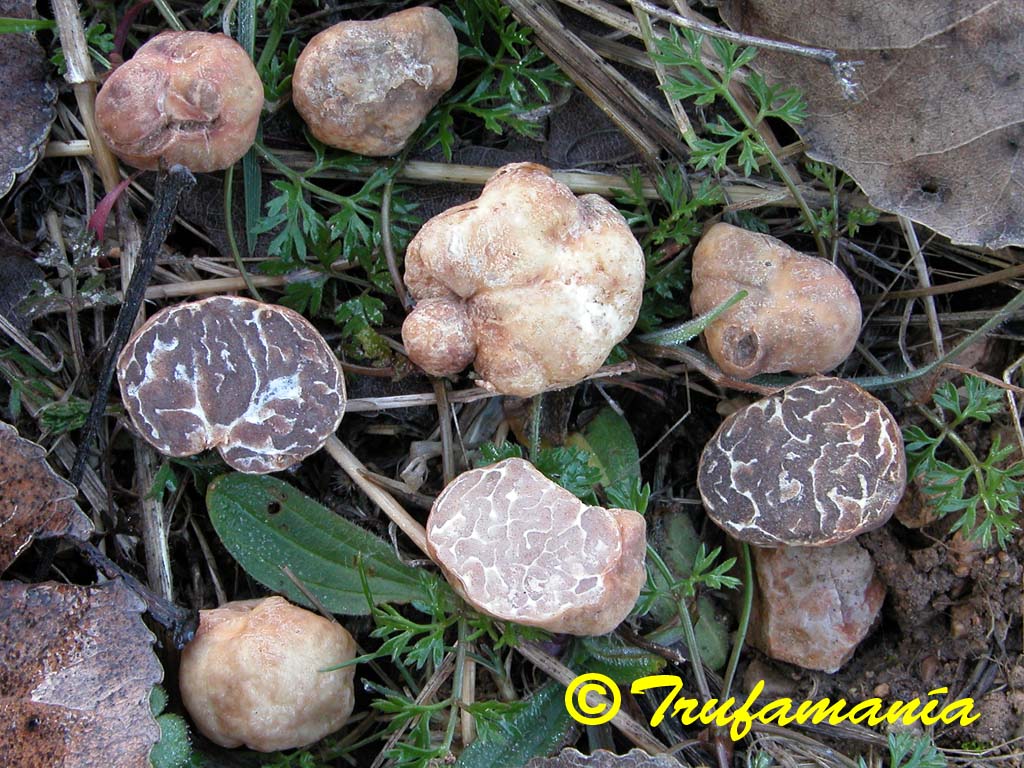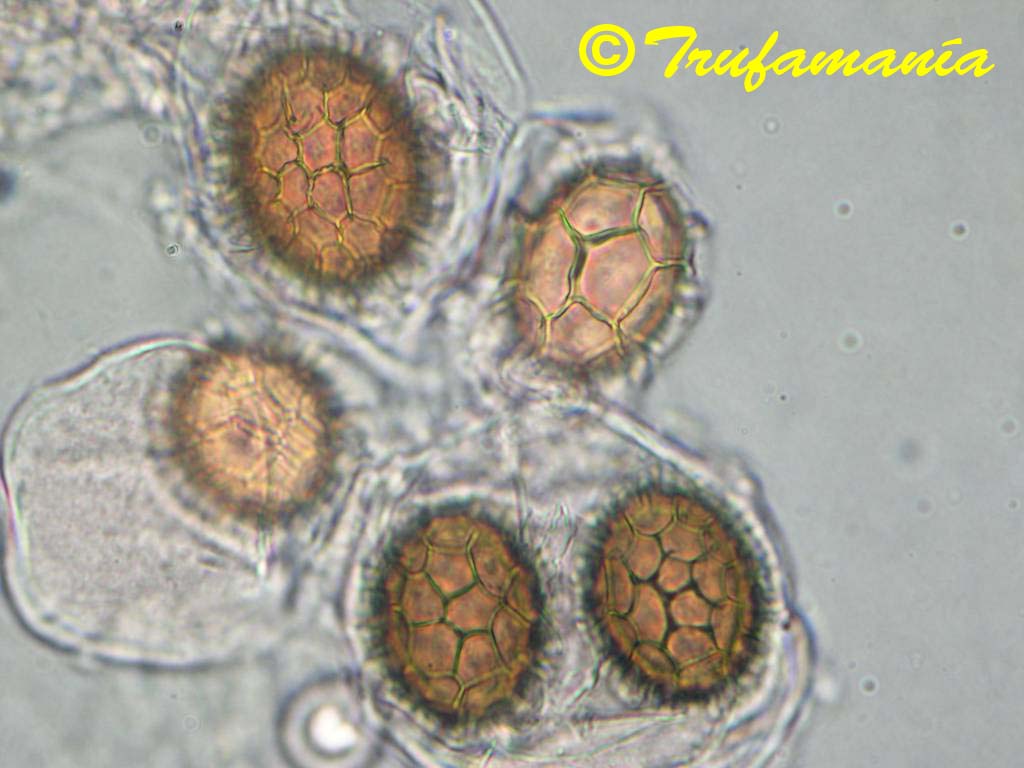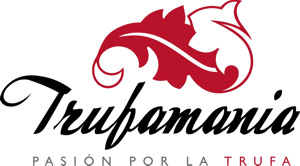TUBER BORCHII Vittadini
Monographia Tuberacearum 44, Tab. I fig. III (1831)

(Click on the picture to see more images)
Synonyms:
Tuber albidum Pico (1788), Melethemata Inauguralia. De fungorum generatione et propagatione 79
Tuber album Bulliard (1788), Herbier de la France tab. 404
Macroscopic characters:
Ascomata: hypogeous, subglobose or irregular in form and gibbous, 2-3 (7) cm in size, smooth, pubescent at first, glabrous at maturity, initially whitish, becoming brown ochre, often with reddish spots
Gleba: firm, solid,, whitish at first, then beige, reddish brown at maturity, marbled with white, wide, anastomosing veins wich arise from various point on the periphery.
Odour: tuber-like, garlicky, pleasant at first, strong and unpleasant with age.
Taste: strong, pleasant at first, garlicky.
Habitat
Tuber borchii is tolerant of a wide variety of soils, but prefers well-drained, sandy calcareous soils. We can find these truffles in clay and sandy soils, in association with conifers or broad-leaved trees, in calcareous soils and in acid soils. They ripen from January to late April.
Notes:
Tuber borchii, Tuber dryophilum, Tuber maculatum y Tuber puberulum are a white truffles group, with reticulate-alveolate spores, difficult to tell apart. They have similar macroscopic and microscopic characteristics and sometimes they show a range of intermediate forms between several of these species. It is therefore not always possible to differentiate one species from another.
Tuber borchii is an edible truffle, gastronomically appreciated when young. It was first cultivated in Italy in 1990.

(Click on the picture to see more images)
Microscopic characters:
Asci: subglobose to ovate or ellipsoid, sessile or short-stalked, 70-100 x 50-80 µm, 1-3 (-4)-spored (usually 3-spored)
Ascospores: 32-47 (-55) x 23-39 (-42) µm excluding ornament, size variable depending on number of spores in the ascus, Q range = 1,06-1,46, ellipsoid to broadly ellipsoid, light yellow, brown at maturity, translucent, ornamented with a regular reticulum with meshes 4-7 (-10) µm high, 4-10 µm long, 4-8 across width of spore.
Peridium: 150-200 µm thick, whitish, pseudoparenchymatous, composed of subglobose to polygonal cells, 10-30 µm diam, densely covered with hairs in young specimens. Hairs 40-70 µm long, 4-5 µm across at the base, tapered, hyaline, septate.
| Antonio Rodríguez trufamania@gmail.com antonio@trufamania.com |



